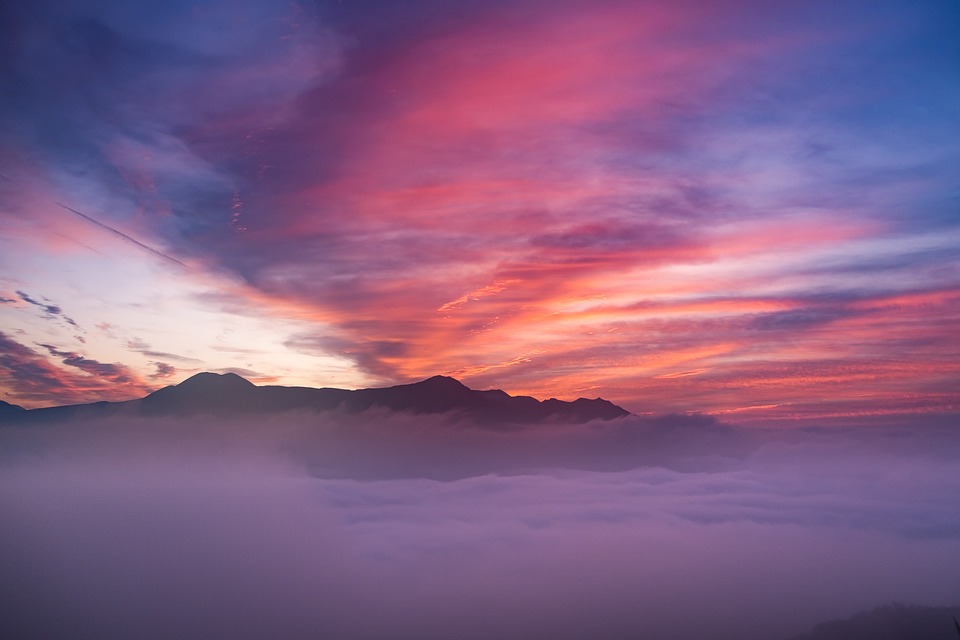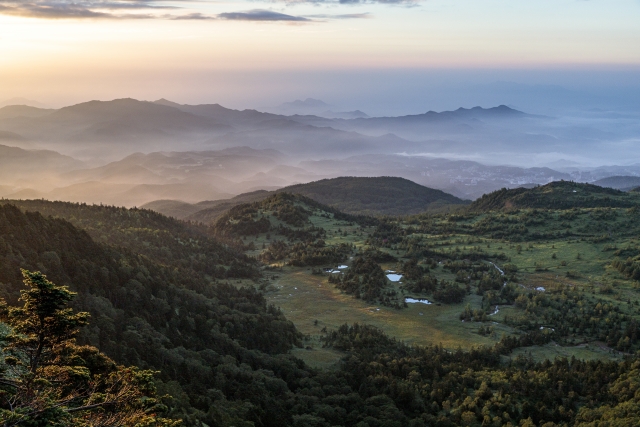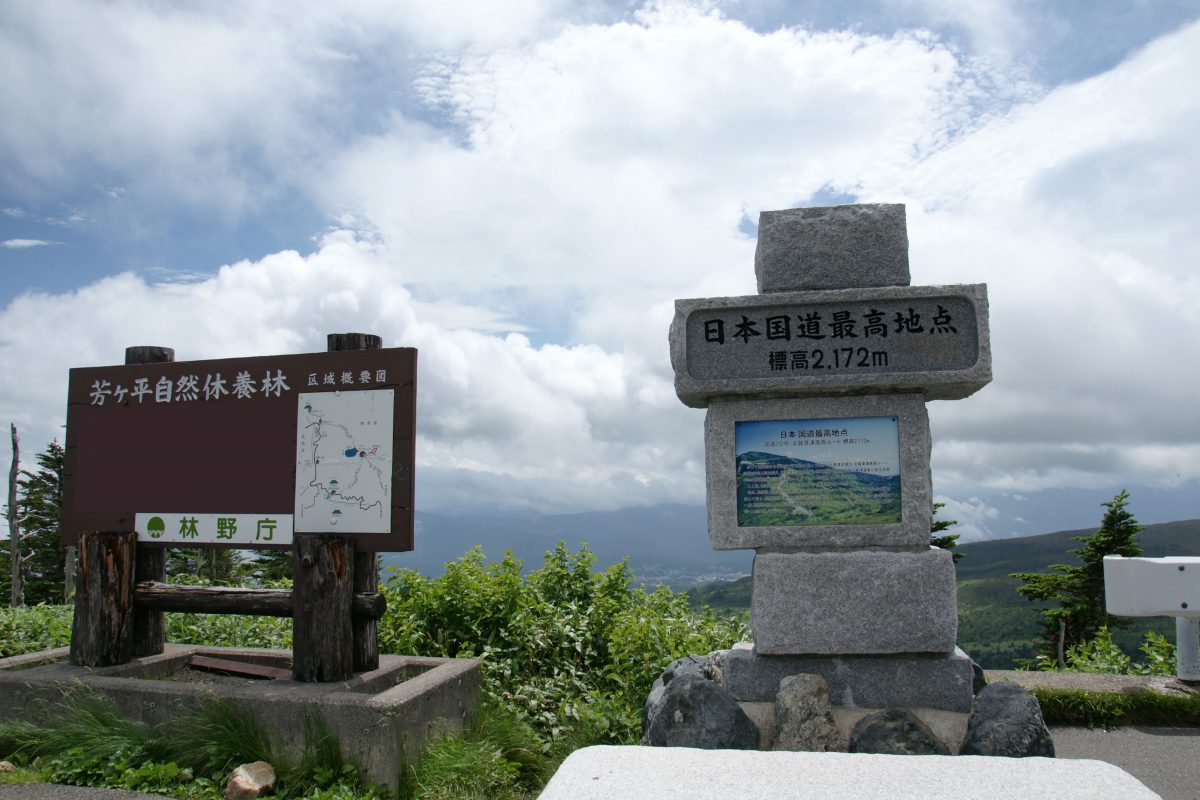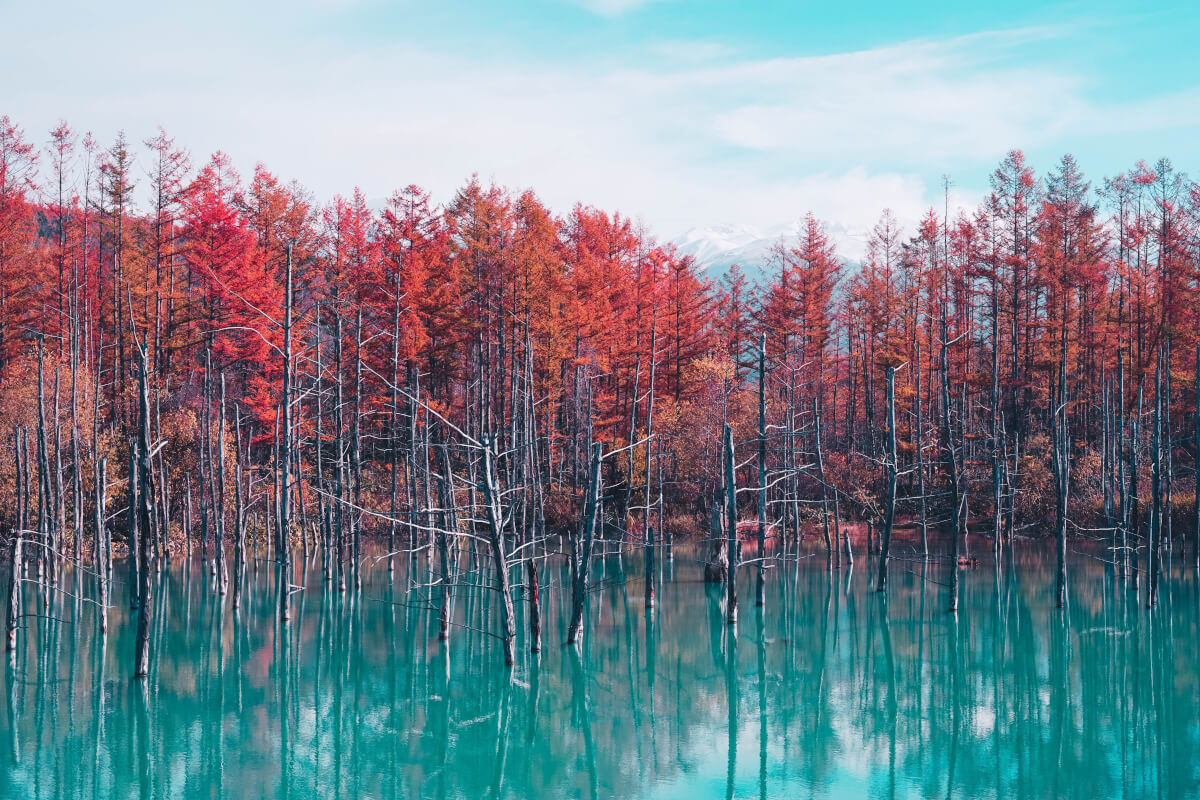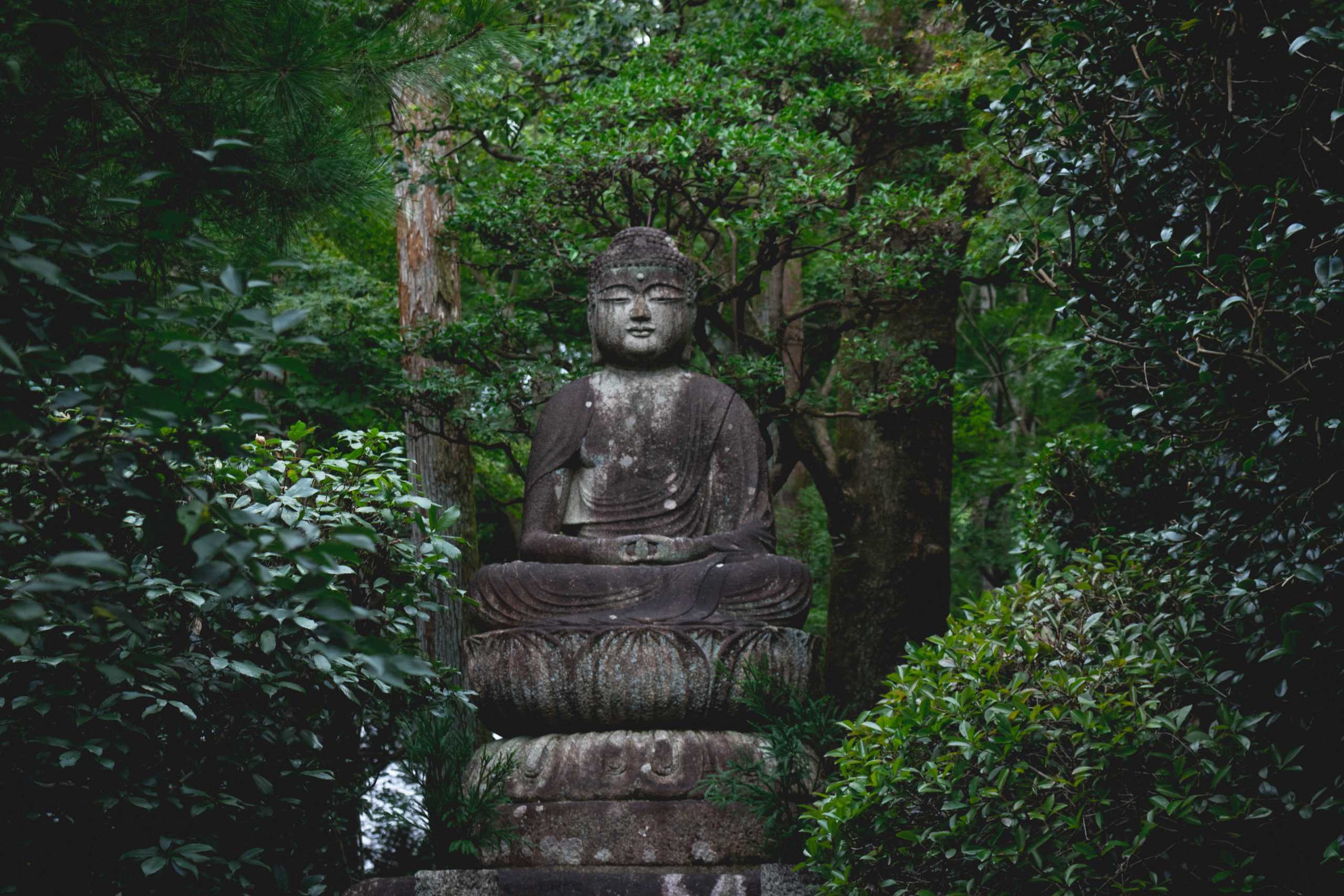One of the most beautiful natural occurrences in Japan is the unkai, or sea of clouds. This is when clouds form at a low enough elevation that if you’re in the right spot, you can view them from above, and look out over an expansive “sea” of fluffy clouds. It’s a rare sight, but thanks to Japan’s topography, it’s a phenomenon you can experience in multiple locations. Just one look at your pictures of these awe-inspiring views, and your friends will be dying to replicate your trip.
Usually found in mountainous regions, unkai can be seen in the early morning when there is little to no wind and high humidity. You can’t always be sure you’ll get a chance to view them, but there are several spots that are famous for it. We’ll go over a few of the most notable ones and how you can take part in this Japanese tradition.

1. Unkai Terrace
If you’re going to be in Hokkaido at any point in your journey, you’ll be able to visit probably the most popular and well-known spot for viewing the sea of clouds: Unkai Terrace. At the Tomamu Resort in central Hokkaido, the elevation of 1,088 meters provides the perfect perspective for cloud-viewing. Open from mid-May through October, there are gondolas that operate early in the morning to take you up to the viewing area.
It costs around ¥1,900 for an adult to go up and back, and you’ll be given a postcard that you can mail for free to anywhere in the world from the terrace. You’ll need to take a train from Sapporo to get to the resort, so it’s best to stay overnight to ensure you’ll be able to make it early enough to view the clouds.

2. Shibu Toge
Shibu Toge Pass is located in Gunma & Nagano prefectures, between Mount Yokote and Mount Kusatsu Shirane. At more than 2,100 meters in elevation at its highest, it is one of the highest roads in Japan. The panoramic views are awe-inspiring, especially in the fall when the leaves change color. There is a great deal of snow in the winter, so sometimes the road is closed, meaning it’s a good idea to check before you leave. The Shibu Hotel is in a prime location for all the tourist attractions in the area. You can also find onsen baths close by where you can relax after the chilly morning. This spot is advantageous because it isn’t terribly far from Tokyo and allows visitors to see the unkai during more of the year than some other locations.


663highland, CC BY-SA 3.0 , via Wikimedia Commons
3. Takabocchi Kogen
Also in Nagano Prefecture (and therefore within a couple hours’ train ride from Tokyo) is Takabocchi Kogen, which has an elevation of around 1,600 meters. The sea of clouds is viewable from September to March, and on some days, you can take a photo with the unkai in the foreground and Mt. Fuji in the background. What makes this a great option for tourists is that it’s an incredible photo spot even without the unkai, so the day won’t be lost if there are no clouds. After all, a picture of Mt. Fuji looks pretty good no matter what!
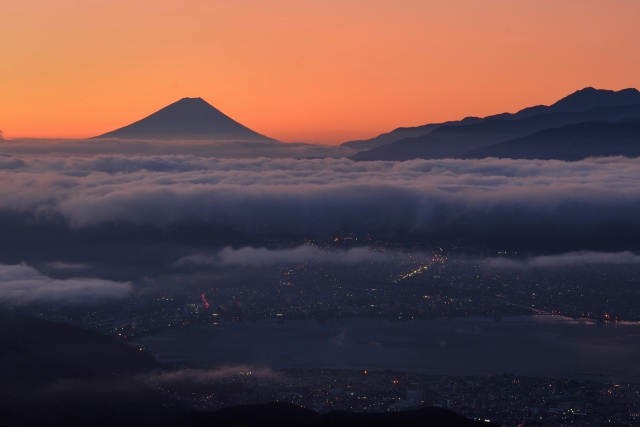
4. Hottarakashi Onsen
For even more views of Mt. Fuji, you can try Yamanashi Prefecture, home to Hottarakashi Onsen. Trying a traditional Japanese bath is enough of a reason to visit, and the ability to see the unkai is an added bonus. There is an outdoor bath which is open one hour before sunrise, so you can soak while taking in the scenery. If you’re staying in the area, you can walk or take a cab from Yamanashi Station (it’s about 10 minutes by car), but if you’re coming all the way from Tokyo, you’ll have to drive to get there before sunrise, since public transportation does not operate 24 hours a day. This is probably the most luxurious way to see the clouds, and worth the extra effort since you can cross two things off your Japan bucket list at once.
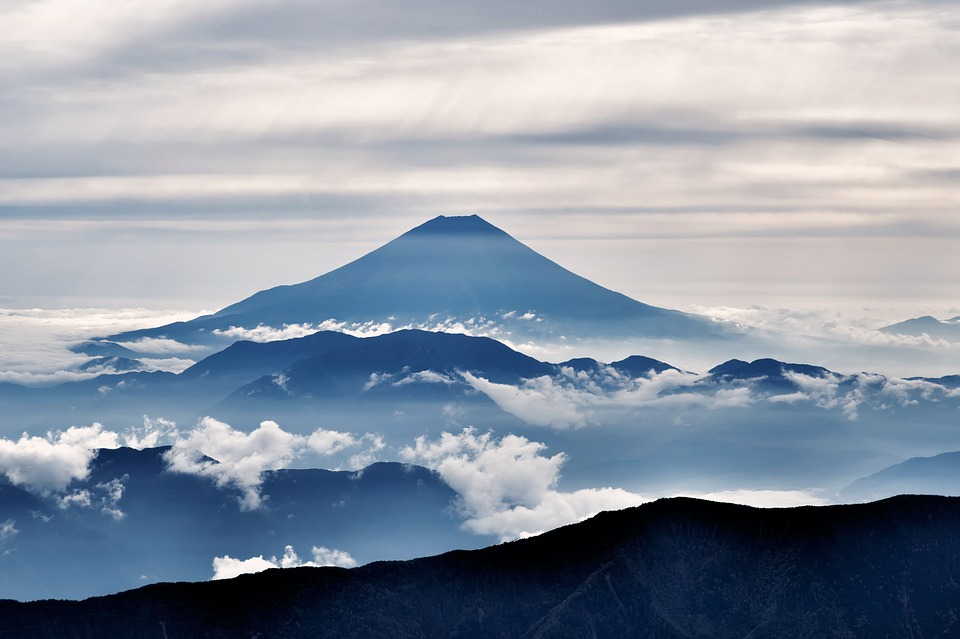
5. Oeyama
If you’re visiting Japan in the fall and winter, you can get great views near Oeyama, or Mount Oe, near Kyoto. There are multiple shrines on the mountain, but the best views can be found at the Onitake Inarijinja Shrine, at the mountain’s 8th station. From Kyoto, you’ll need to take a train to Oe Station, then a city bus to its last stop, and finally a one-hour hike. The legwork involved makes this a pick best-suited to outdoorsy types, but its proximity to Kyoto makes it a very practical option for those who won’t be in the country long.

6. Takeda Castle Ruins
In Hyogo Prefecture, northwest of Osaka, you’ll find the ruins of Takeda Castle, sometimes referred to as the Machu Picchu of Japan. In October and November, as the sun rises, the castle appears to float above the mist of clouds, creating a truly ominous and memorable look. At only ¥500, it’s quite reasonably-priced to visit. However, there is a lot of walking involved to get to the best viewing spots, and the location is less than ideal. Even if you’re staying in Kobe, you’ll still have to take the train quite a ways to reach the castle, and will have to stay overnight in order to be there for sunrise, so for this destination, going by car is the best way to save time.
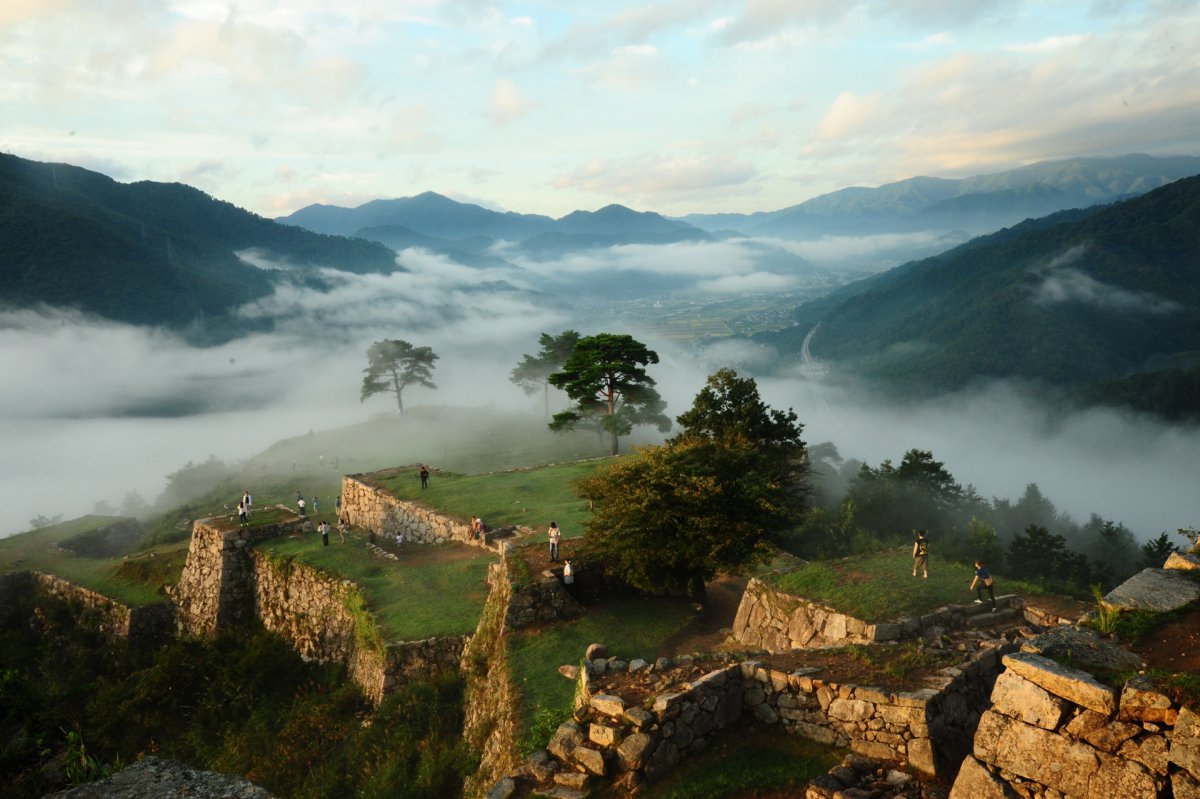
7. Bitchu Matsuyama Castle
Visitors to Okayama and the Chugoku region (which also contains Hiroshima) have an opportunity to see the unkai at Bitchu Matsuyama Castle (sometimes written as Bicchu Matsuyama), which was built in the year 1240 and sits at an altitude of 430 meters. You can make a reservation to share a taxi from nearby JR Bitchu-Takahashi Station, and then it’s a 20 minute walk and 500 yen fee to see the castle and the clouds. The best time to go is in the fall when the leaves change color, but it’s also possible to view the unkai in winter. The area is quite beautiful and offers more to see than just the sunrise, so it’s a decent place to spend a half day or even a full day after you’ve taken your photos.

While you’ll have to go a bit out of your way in order to see the sea of clouds, it’s a natural wonder that will easily take your breath away. The unkai prove once again that those who come to Japan and never leave the city are missing out. Are there any spots we missed? What are your favorite panoramic viewing spots in Japan? Let us know!
Follow us on Instagram, Facebook and Twitter for more travel inspiration. Or tag us to get featured!
Happy traveling!
You may also like below articles
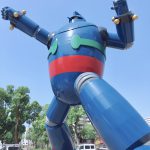
Gregg Maxwell Parker is an author and screenwriter best known for the book Troublemakers. Originally from the United States, he moved to Kobe in 2018. Gregg and his wife, Eriko, are the minds behind the blog As Seen In Japan, where they share pictures and stories from everyday Japanese life. They can be found on Twitter and Instagram.
This post may contain some affiliate links. When you click through and make a purchase we may receive some commission, at no extra costs to you.
